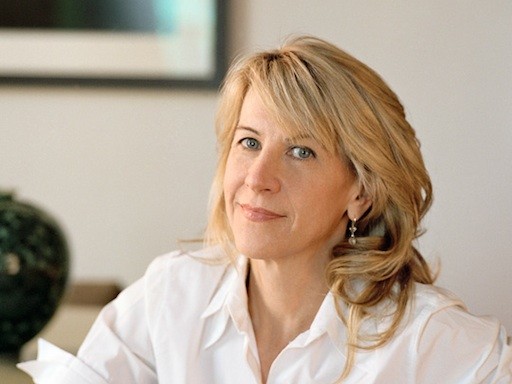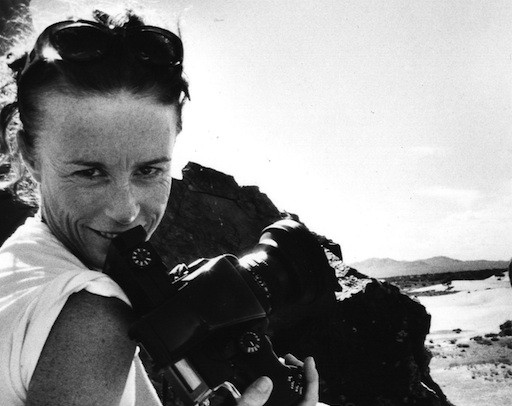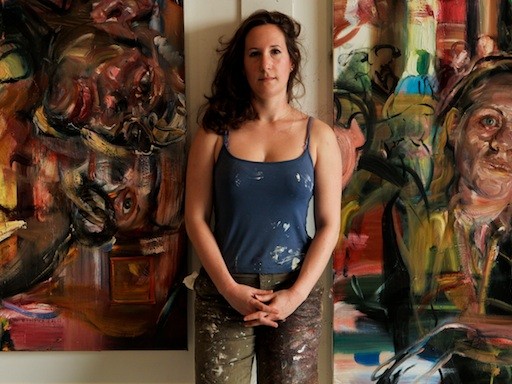The photographer Sally Gall has built a reputation for taking unusually intimate photographs of nature, bringing the viewer into close contact with sometimes unruly, sometimes elegant patches of the wild. With a show of her new work opening at Julie Saul Gallery this March, Artspace curator Nessia Pope spoke to Gall about her approach to photography—and the dramatic departure she is taking in her newest series.
What kind of work are you going to be including in your new show?
I would describe the new work as "image poems"—composite works of two or three photographs that have a cinematic montage quality and whose sum is greater than the individual parts.
Are you using a different format in these photographs?
I am using a vertical format, which is new for me, and trying to leave the ground and the horizon behind to take the viewer into a world of earth and sky.
As a longtime landscape photographer, you have always been horizon-oriented and most of your images are horizontal. What brought about this change?
A vertical format takes the viewer on a very different kind of ride and forces a different kind of seeing. The title of the show is "Unbound," which should give you some idea of the sensations I am trying to evoke. Everyone imagines one's soul will eventually drift away and up from the body and be freed from gravity.
In your horizontal insect photos you put the viewer in a space that is occupied by nature. As we crawl along with the insects, we do lose track of the horizon line, but gravity is very present. How did the new work evolve from one extreme to the other, although they have a lot of things in common?
Flying not crawling… I actually never thought of that, but you are right. I started to do a body of work that would be about an epic journey, so I always intended movement through place and space and then it ended up revealing itself to be about being aloft—about weightlessness. It's true that both bodies of work have many things in common, and that the new work evolved to be an extreme break from the close-up, eye-on-the-ground work. I always want my work to be visceral and sensual, so that one feels the air or feels the texture of the grasses—that one not only sees the insect but also feels like one of them, living in their world. Likewise in the new work obviously you see the airplane but I also want you to feel it, as if you are there in the air with it.
You spend much of the year in your house in Tuscany. How does the Italian landscape influence your work?
I love "worked" nature—gardens, cultivation, and formal plantings—and in that respect the Tuscan landscape is a continuation of the kind of natural world I am interested in photographing, and which has always influenced and informed my work. I love the landscape around my house. It was once an ancient sea. It’s called the "crete," or the badlands, and it‘s very open, volcanic, undulating, and sensual, consisting mainly of fields of wheat and occasional farmhouses and small towns on hilltops that you can see way in the distance. At night, in the dark, the lights of these various places look like islands in a dark sea. I have photographed it for years and years and still haven't gotten it right. I keep trying. I don't know how it influences my work other than to say that I'm deeply connected to it, and find it to be one of the most sensuous places I have ever been. It’s also the most compelling open landscape I have ever experienced, except perhaps the high desert in the western United States.
How did you start to take photographs?
I had a wonderful high school art teacher my senior year who was also a photographer and architect—he taught photography within the art class and that was about all it took. I always loved the arts and had a mother who took me regularly to museums when I was growing, and I knew I was going to end up doing something visual and sensual, I just didn't know what form it would take. I also craved to be out in the world and to be in nature, and photography was the perfect medium to bring me in contact with the stuff of the world. It was an art I could always take with me—I love to travel, to go foreign places, to explore. Photography became the perfect medium with which to express my thoughts and feelings.
I guess, then, that working in a studio is not for you?
My desire for exploration are the same as that of a 19th-century photographer: to see what the world looks like, to go to foreign places to see and photograph what is out there. There is no other way to see it except to go. I am a big fan of painting and painters, but as much as I admire that medium I always knew that working in a studio was not for me.
Although you photograph vast landscapes and nature, I find that you have a very intimate eye. I love discovering the details in your photographs. I also love when you isolate a branch or a blossom. I am fascinated how you go from black and white to color without losing that feeling of intimacy. Did you always work in both black and white and color?
Black-and-white photography was my first love, and continues to be. I worked in it for 30 years, and periodically I would think "I should learn about color," but nothing ever came along that made me feel the need to change—until one day, seven years ago, I simply gave in to the lush beauty of all the pink cherry blossoms in full bloom against a bright, sunny blue sky. It opened up the world of color to me. But I love the inherent abstraction of black and white. We live in a world of color after all, so to make an image without color is really pretty radical. A black-and-white image takes you outside of reality, but just slightly outside. With color photographs it’s all about the specific picture and specific subject matter. I am comfortable working with a limited color palate and soft colors—for example, a blue ocean and a blue sky on a slightly overcast day. I like moving between the two worlds, and my next exhibition will include both color and black-and-white images.
What is your advice to a young photographer, to someone who is just beginning to discover and fall in love with the medium?
Find what you like to do, to take photos of, to make art about, and don't worry about trends or what is showing in the galleries or what everyone else is doing. Pay attention to what is important to you—don't get too swayed by other people's opinions. This can feel lonely at times, but if you don't connect to what is inside of you, in the long run you won't have anything.
Meet the Artist
Photographer Sally Gall on Her Intimate Portraits of Nature



























